Cardinals on a Cholla Skeleton
A fairly regular occurrence in my backyard
(If you are reading this in your email and would like to have a larger font, or would like to see the photos in a larger format, click on the headline or click on the blue "DanWeiszPhotography" banner and it will take you to the website directly. You can also click on any photo to see an enlargement)
On a cold morning, I watched as some cardinals took turns perching on a dead cholla cactus in my backyard. That cholla seems to be a favored spot for Cardinals waiting for the right moment to fly over to the sunflower seed feeder. The first bird is a female Cardinal. Because of the cold temperature, the Cardinal fluffed out her feathers to help trap air between them. This helps her retain her body heat. In addition, one foot is tucked under those feathers to keep it warm.
This species' formal name is the Northern Cardinal, but pretty much everyone just knows it as a "Cardinal". The males are bright red and images of the male Cardinals are among the most recognizable of all birds in the US. Female Cardinals are an overall brown color, perhaps with a faint orange wash. There are reddish tinges to her crest, wings and tail. The females do have a hint of the male's black mask on their face. By the way, the Cardinal is now sitting up straighter but still has only one of her feet down. She is also less puffed out in the shot below as she is getting ready to fly.
There are plenty of Cardinals in the Tucson area. I find their range map fascinating. While we take Cardinals for granted here, the range map shows them living year round in the eastern half of the United States. In the US west of Texas, Cardinals are only to be found in southern New Mexico and southern Arizona.
The back of the female Cardinal shows her simple coloration with her tail tinged in red.
In both of the photos above and below, the Cardinal is on the exact same cholla branch. To learn more about Cardinals, I again refer you to Birdnote: https://www.birdnote.org/podcasts/birdnote-daily/northern-cardinal-meet-cardinal
Here is the male Cardinal on the same cholla. This is the bird that is familiar throughout the United States and so conspicuous with its bright red color. It maintains that bright color year round unlike many other bird species whose colors may become muted outside of breeding season.
The bright red colors of this bird reminded the early European settlers in North America of the red robes and caps worn by the Cardinals of the Roman Catholic Church. That is how the bird got its name. The photo below is almost exactly the same as the one above. I'm sharing it because the Cardinal landed on the exact same cholla branch, just a few inches lower in this shot but minutes later than in the prior photo. It shows how regular the Cardinal can be with its habits. It does like that branch for launching towards the seed feeder.
And now, a few inches higher, this handsome male is in the same spot as it was in the first photo above.
The Pyrrhuloxia is a desert songbird that is related to Northern Cardinals and some people refer to this bird as "Desert Cardinal". To me, that takes away the special beauty of this unique bird of the desert. I think it is important to know and call this bird by its proper name, Pyrrhuloxia ("Pie-ruh-lock-seeya" with the accent on the "lock" syllable).
Shaped like a Cardinal, the male Pyrrhuloxia is mostly a grey bird but it has a red mask along with red on its belly and its wings and its crest. It has a longer crest than the Cardinal and a beak that is stubbier than the Cardinal and more parrot-like. The roots of its name come from the Greek word "pyrruos" meaning flame-colored and "loxuos" meaning crooked. The Pyrrhuloxia shares its preference for the cholla skeleton as a launching point into my yard.
The Cardinal has a beautiful song due to a special and unique vocal ability. To learn about their song, listen to Birdnote's report: https://www.birdnote.org/podcasts/birdnote-daily/secret-singing-cardinal
To compare the Cardinal's songs to the Pyrrhulxia's, go to these sites:
Pyrrhuloxia: https://www.allaboutbirds.org/guide/Pyrrhuloxia/sounds
Cardinal: https://www.allaboutbirds.org/guide/Northern_Cardinal/sounds


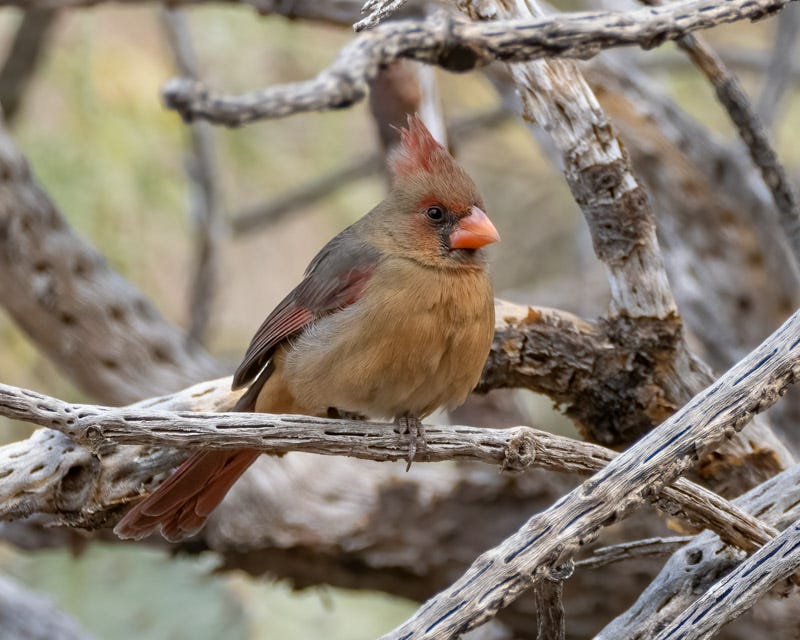
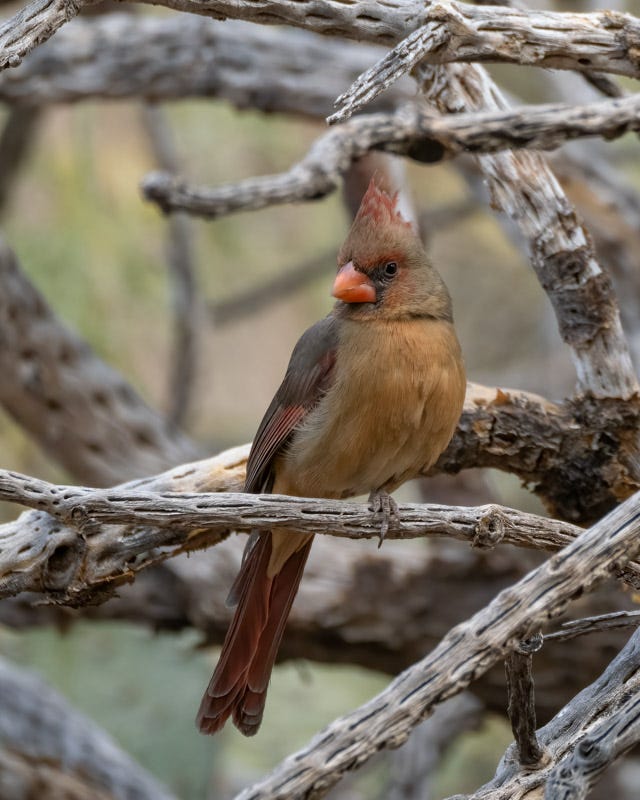
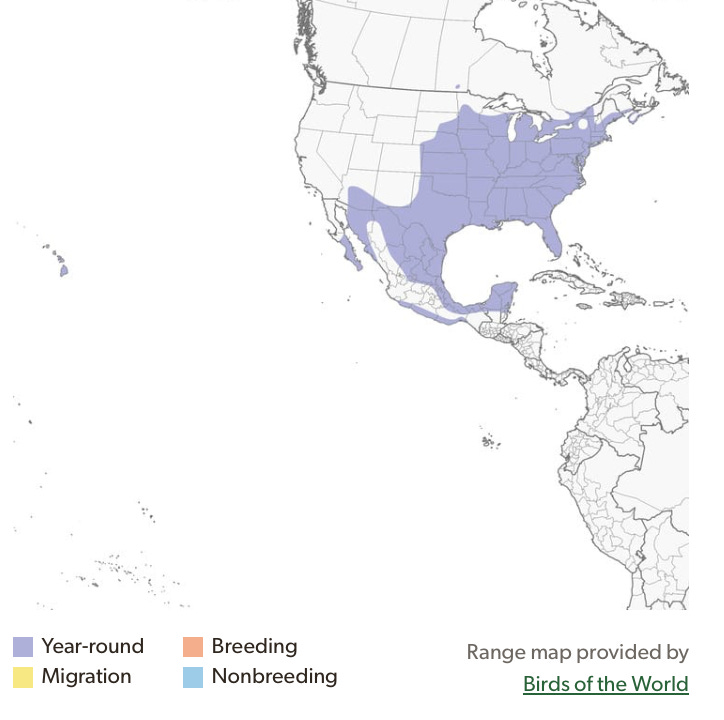
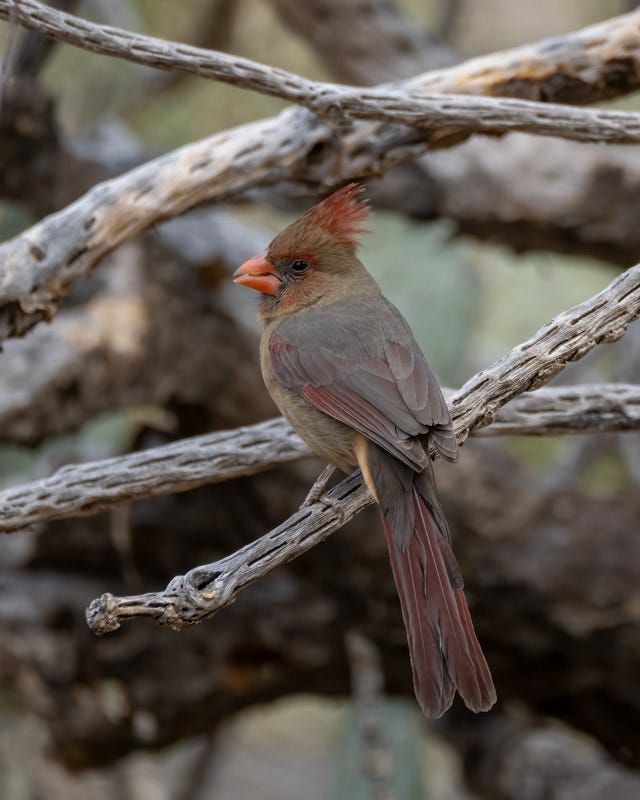
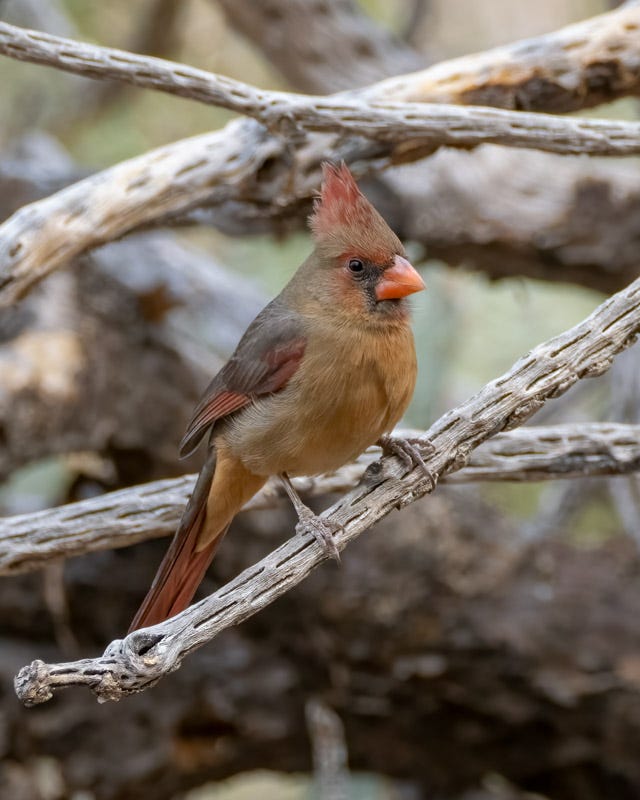
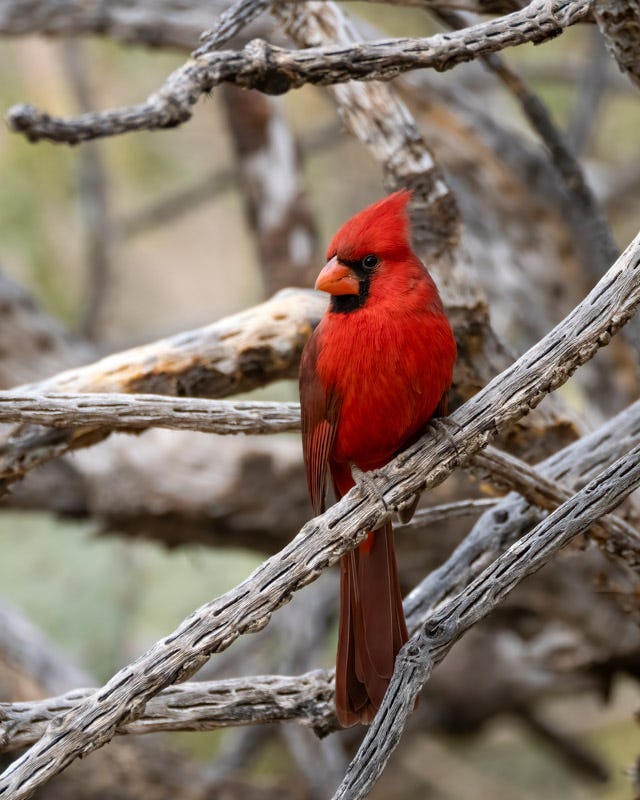
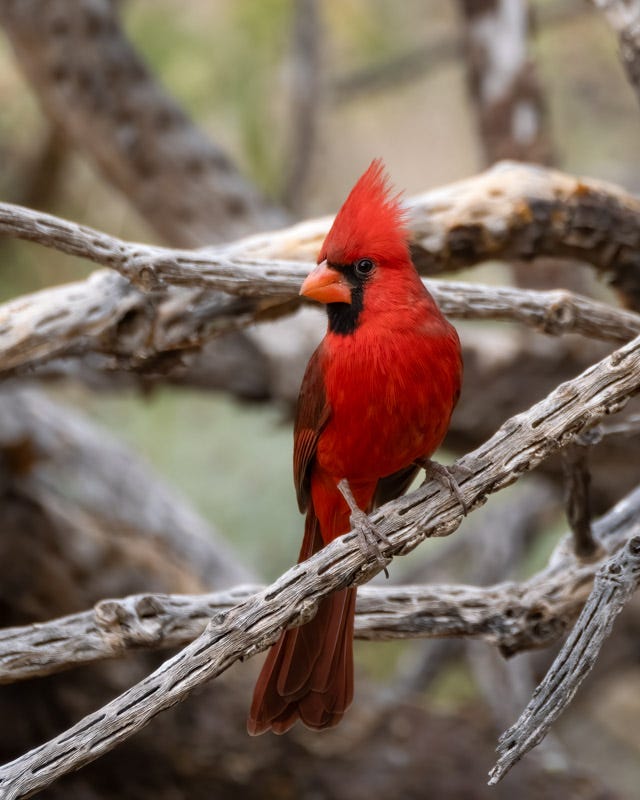
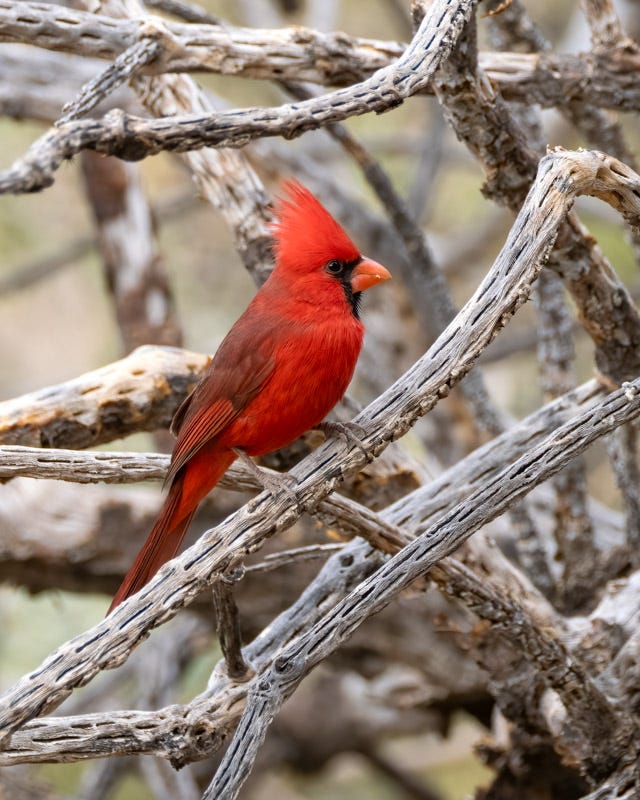
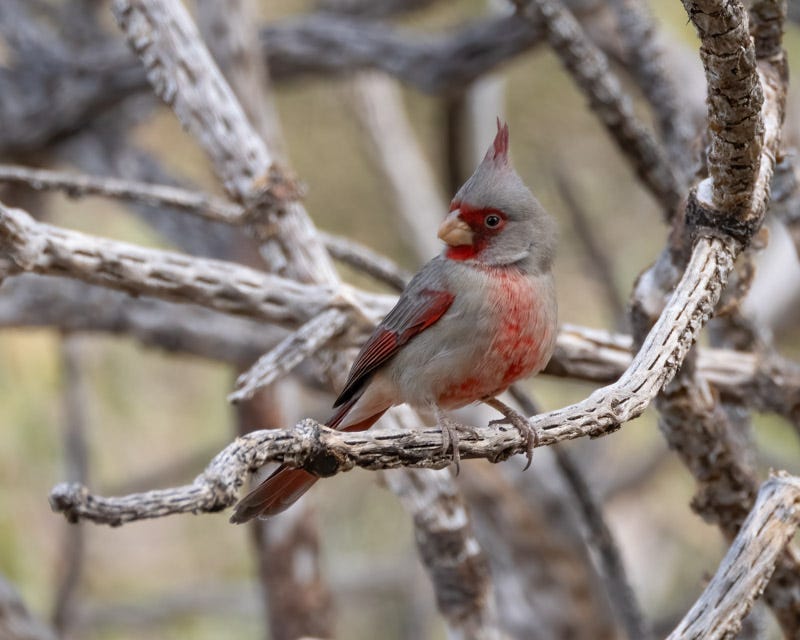
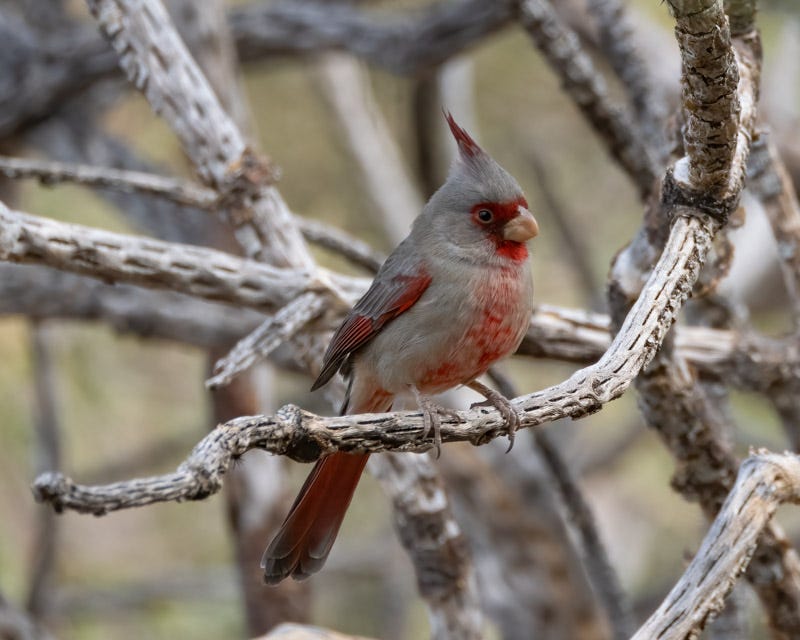
It is like all three birds took turns modeling on the same cholla! Wonderful comparison.
Growing up in New York, we saw plenty of Cardinals. My dad was a pretty good whistler and would sit on the back deck and call back at them- he was pretty good at it!